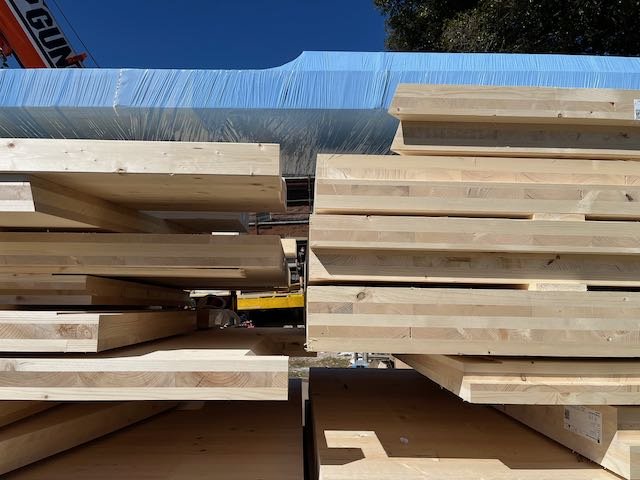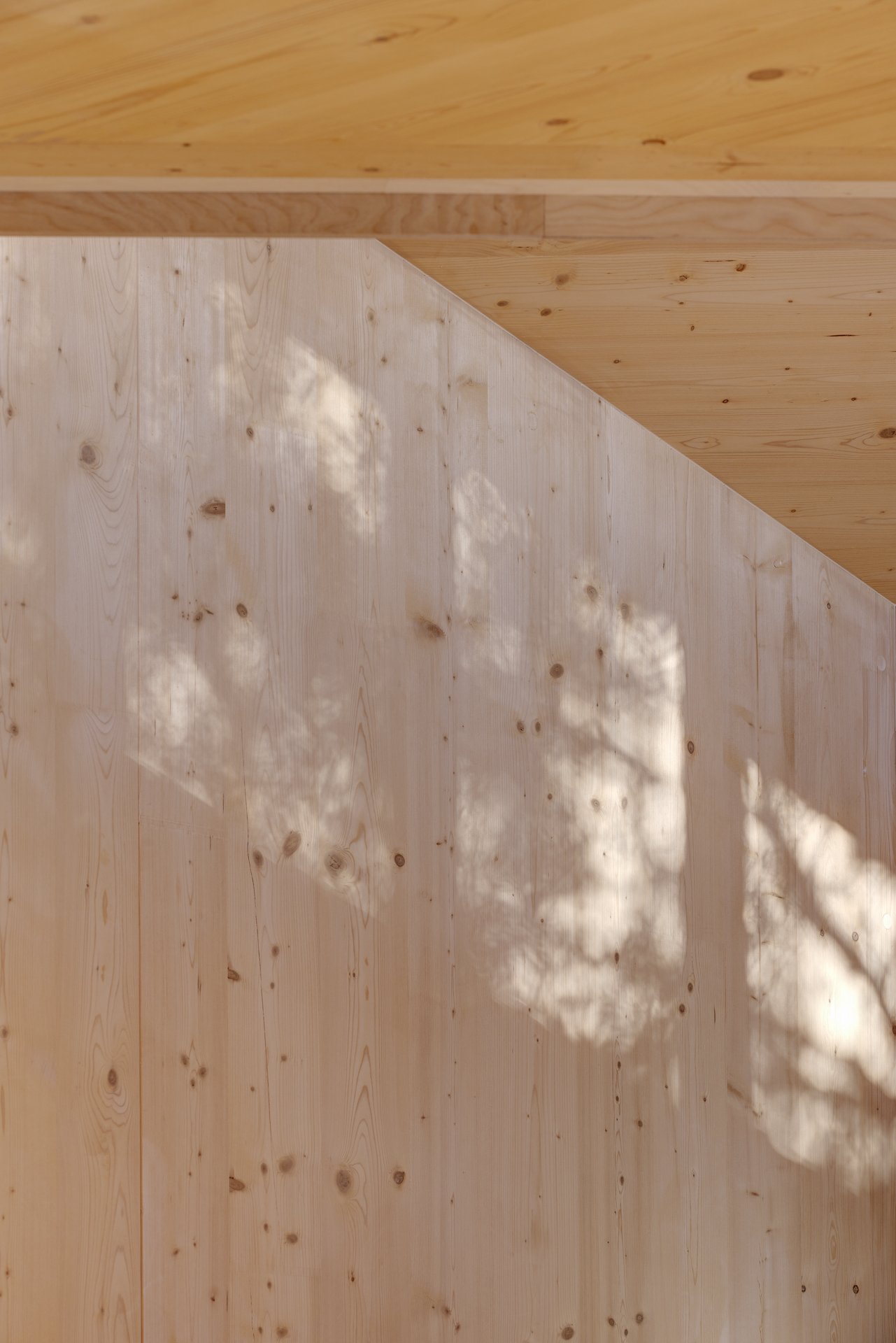Why I like using CLT
What is CLT? Cross-laminated timber (CLT) is a prefabricated material made from pine or spruce planks, with each layer laminated at 90 degrees.
I began using CLT for residential projects in 2018, drawn to its renewable nature, recyclability, and ability to reduce building waste.
The structural strength of CLT also creates great design flexibility.
I love showcasing CLT in its exposed form—highlighting the beautiful wood grain, and providing a solid feeling in a house.
When my clients open their front door they are greeted by the smell of a forest.
Leaving CLT exposed also cuts down on additional trades and costs like plastering and painting, saving time and money.
A major advantage of CLT is fast on-site construction.
A building shell can be assembled in a day, providing immediate weather protection. While CLT requires care and time in the planning and co-ordination stage, on site each panel slots precisely into place, streamlining the building process. During COVID-19 lockdowns, this secure supply chain, reduced on-site labor, and quick lock-up times proved invaluable.
CLT's exceptional strength enables large spans, allowing for bold design choices. With a strength-to-weight ratio 20% higher than structural steel, it allows freedom for sculptural roofs and expansive openings.
CLT is particularly suited for compact urban sites
CLT means thinner walls and floors, maximising space efficiency such as in the CLT Annandale house . Additionally, CLT is a carbon-positive construction material, storing more carbon than it emits. The Canopy CLT House alone stores over 50 tonnes of CO₂, even after factoring in production, transport, and assembly.
Annandale CLT House. Photo by Brett Boardman





